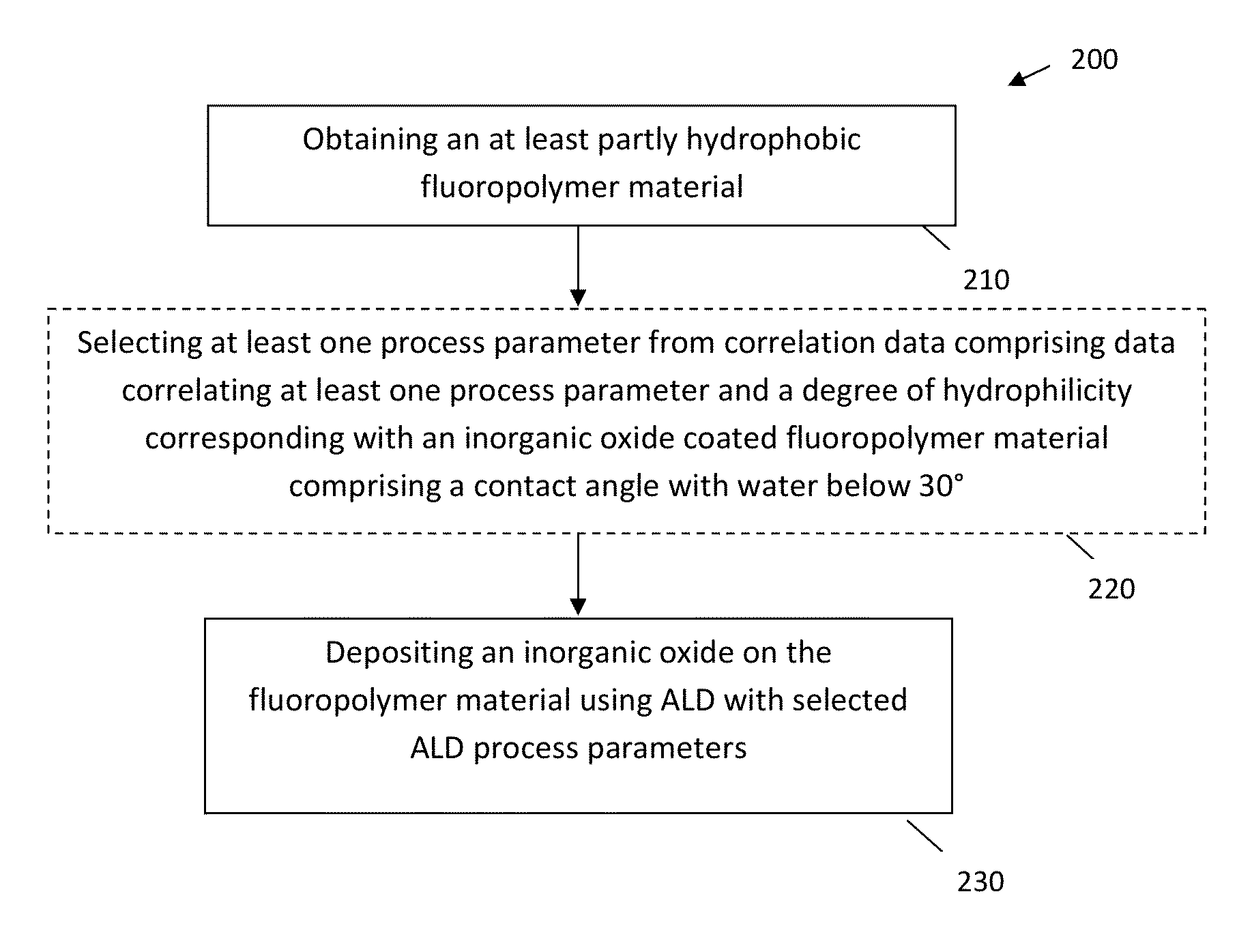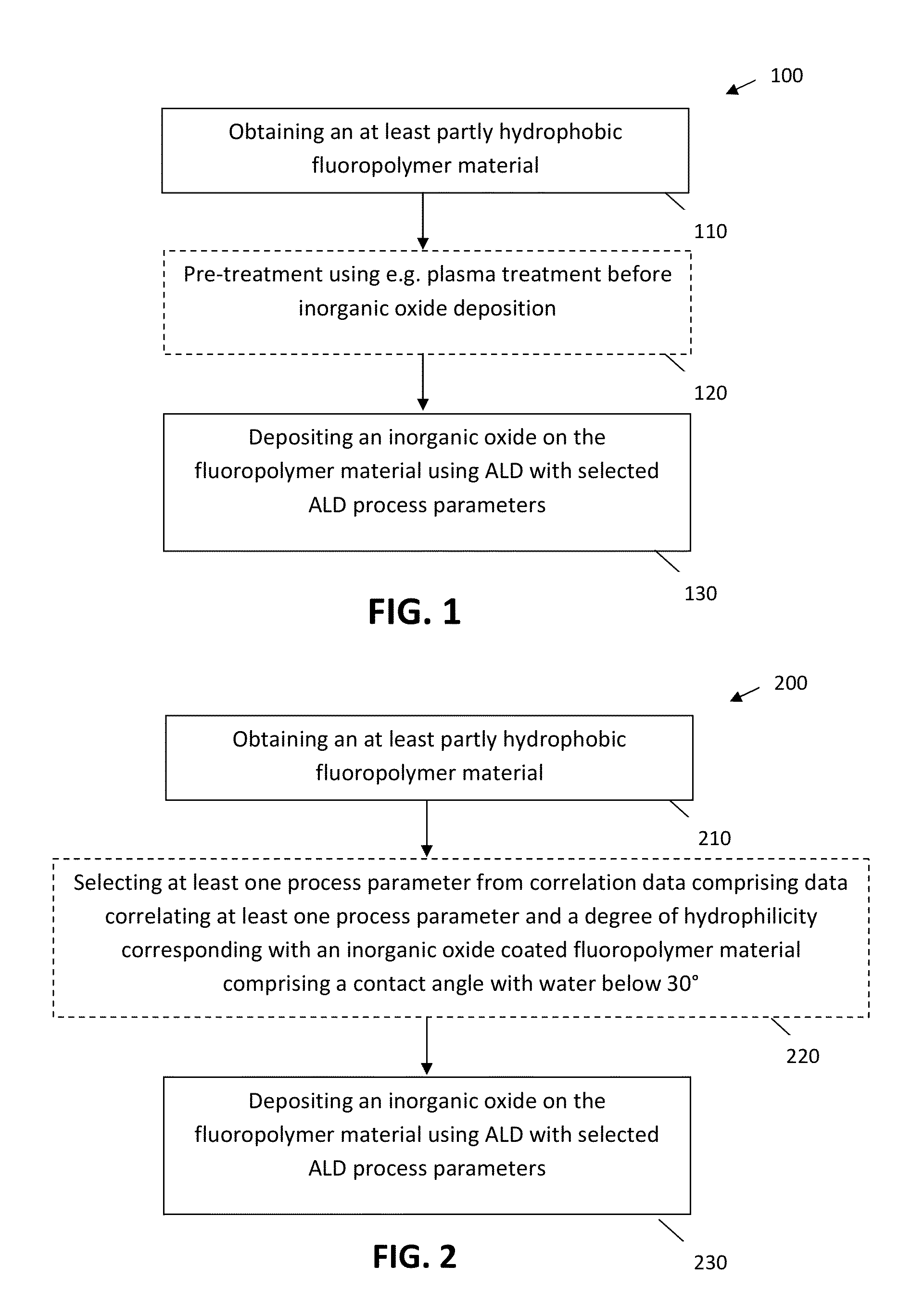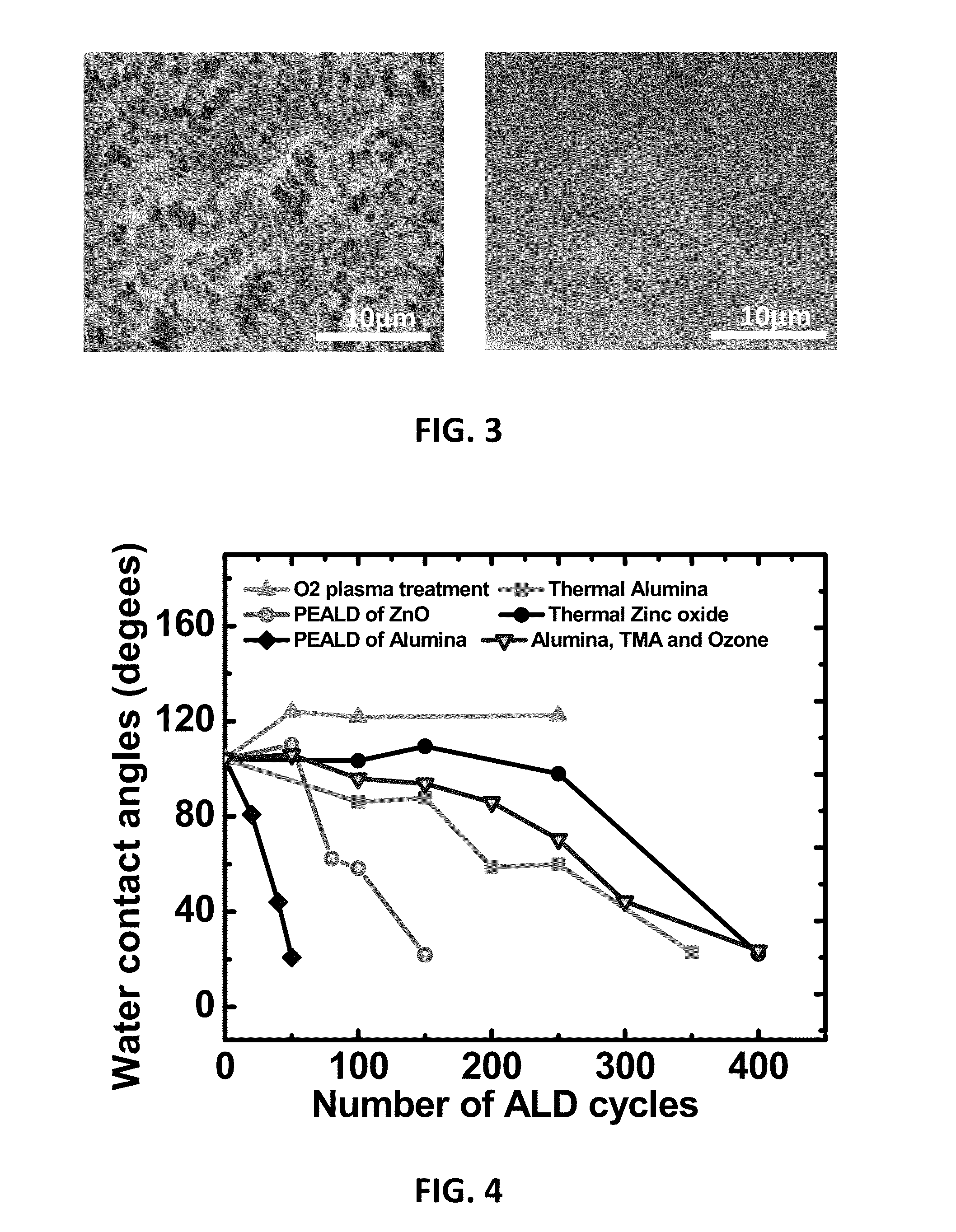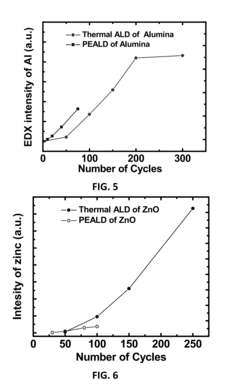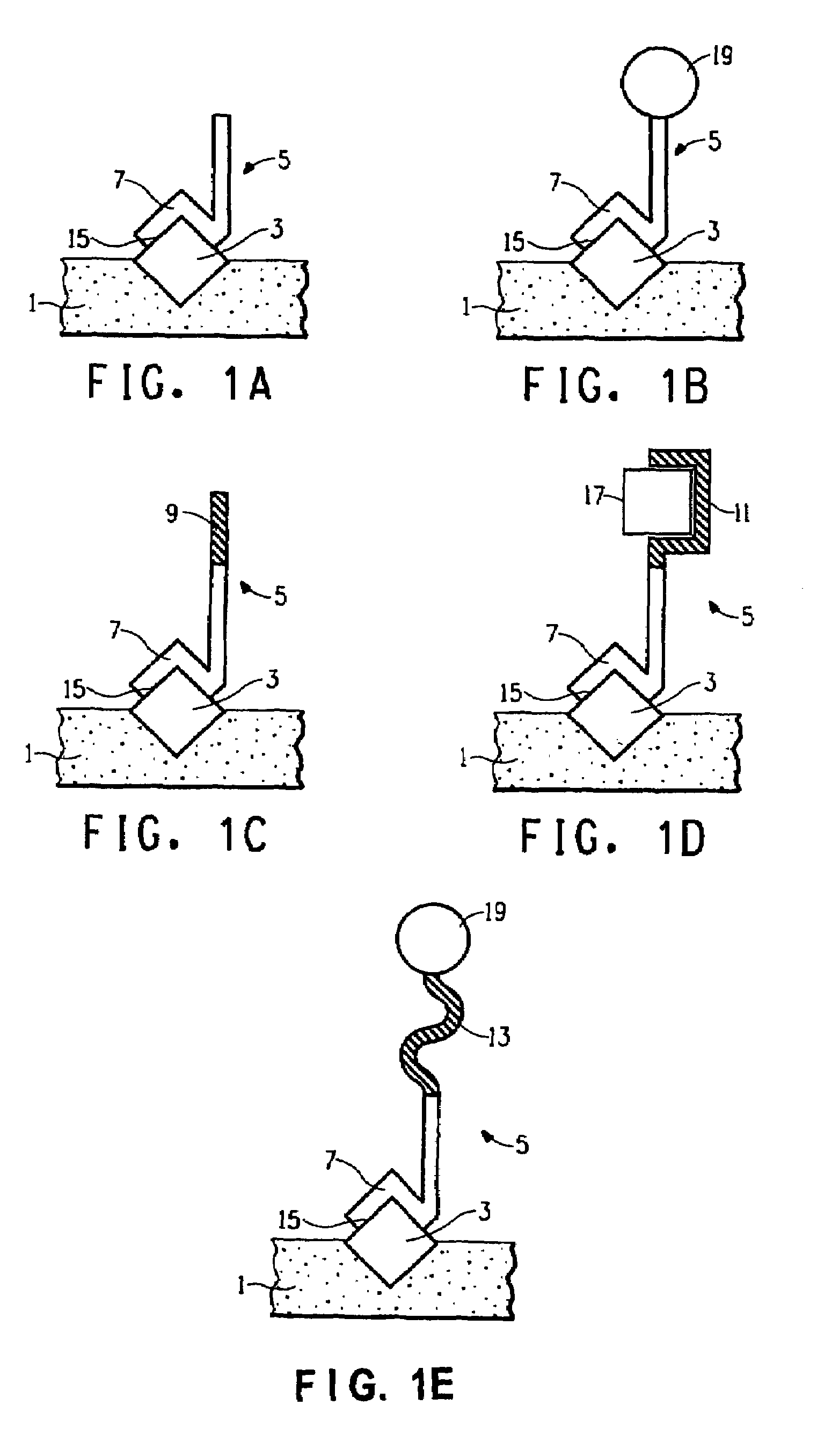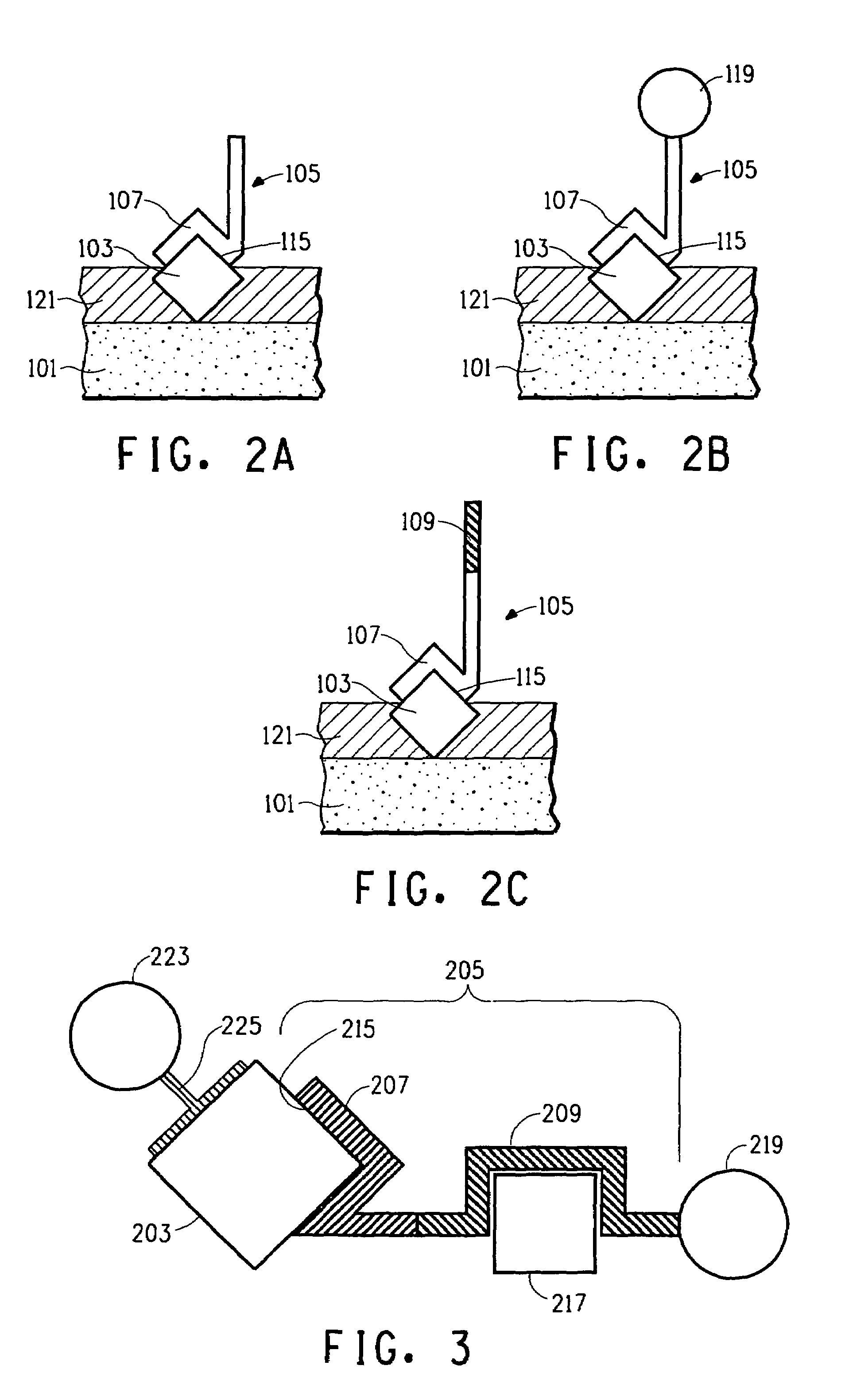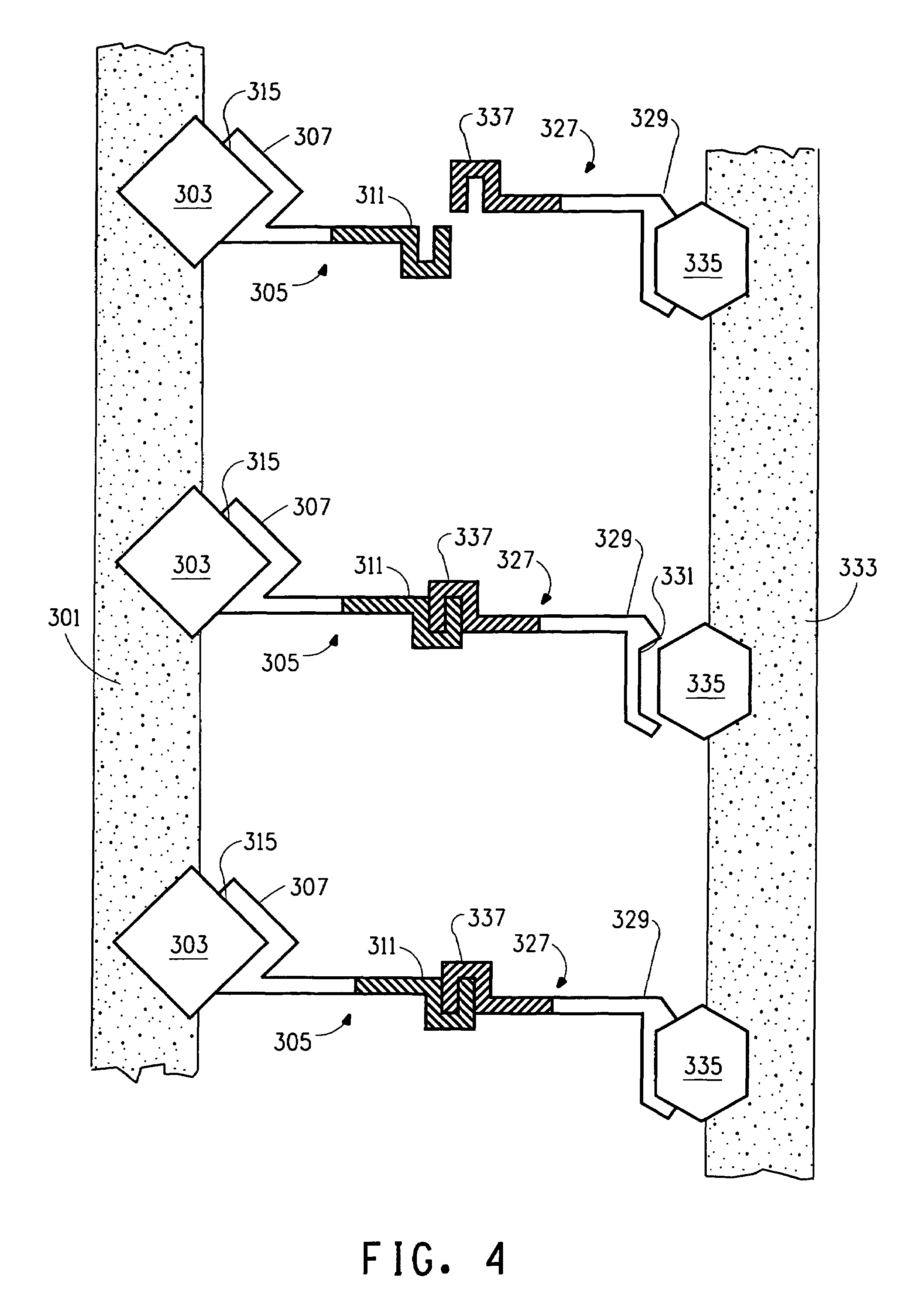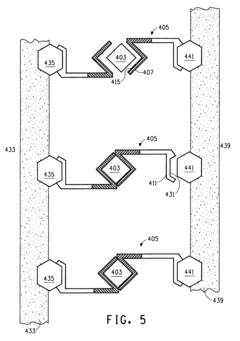How to Identify Key Applications for PTFE?
JUN 27, 20259 MIN READ
Generate Your Research Report Instantly with AI Agent
Patsnap Eureka helps you evaluate technical feasibility & market potential.
PTFE Applications Overview
Polytetrafluoroethylene (PTFE), commonly known as Teflon, is a synthetic fluoropolymer of tetrafluoroethylene with a wide range of applications across various industries. Its unique properties, including high chemical resistance, low friction coefficient, and excellent thermal stability, make it a versatile material for numerous applications.
In the industrial sector, PTFE finds extensive use in chemical processing equipment, where its resistance to corrosive substances is invaluable. It is used to line tanks, pipes, and valves, protecting them from aggressive chemicals and extending their operational life. Additionally, PTFE is employed in the manufacturing of gaskets, seals, and O-rings for industrial machinery, ensuring leak-free operations in high-pressure and high-temperature environments.
The automotive industry utilizes PTFE in various components, such as bearings, bushings, and seals. Its low friction properties contribute to improved fuel efficiency and reduced wear on moving parts. PTFE coatings are also applied to windshield wipers, enhancing their performance and durability in adverse weather conditions.
In the electronics sector, PTFE serves as an excellent insulator for wires and cables due to its high dielectric strength and low dielectric constant. It is particularly useful in high-frequency applications, such as in the production of coaxial cables for telecommunications and aerospace industries.
The medical field benefits from PTFE's biocompatibility and non-stick properties. It is used in the manufacturing of surgical instruments, implants, and prosthetics. PTFE-coated needles and catheters reduce patient discomfort and the risk of infection. Furthermore, PTFE membranes are employed in filtration systems for medical devices and pharmaceutical production.
In the consumer goods sector, PTFE's non-stick properties have revolutionized cookware. Teflon-coated pans and kitchen utensils have become household staples, offering easy food release and simplified cleaning. PTFE is also used in waterproof and breathable fabrics for outdoor clothing and equipment, providing protection against the elements while maintaining comfort.
The aerospace industry relies on PTFE for various applications, including fuel and hydraulic hoses, electrical insulation, and lubricants for moving parts in aircraft engines. Its ability to withstand extreme temperatures and maintain its properties in harsh conditions makes it an ideal material for space exploration equipment as well.
In the energy sector, PTFE plays a crucial role in renewable energy technologies. It is used in the production of fuel cells, where its chemical resistance and low friction properties contribute to improved efficiency and longevity of these devices. PTFE components are also found in wind turbines and solar panels, enhancing their performance and durability.
In the industrial sector, PTFE finds extensive use in chemical processing equipment, where its resistance to corrosive substances is invaluable. It is used to line tanks, pipes, and valves, protecting them from aggressive chemicals and extending their operational life. Additionally, PTFE is employed in the manufacturing of gaskets, seals, and O-rings for industrial machinery, ensuring leak-free operations in high-pressure and high-temperature environments.
The automotive industry utilizes PTFE in various components, such as bearings, bushings, and seals. Its low friction properties contribute to improved fuel efficiency and reduced wear on moving parts. PTFE coatings are also applied to windshield wipers, enhancing their performance and durability in adverse weather conditions.
In the electronics sector, PTFE serves as an excellent insulator for wires and cables due to its high dielectric strength and low dielectric constant. It is particularly useful in high-frequency applications, such as in the production of coaxial cables for telecommunications and aerospace industries.
The medical field benefits from PTFE's biocompatibility and non-stick properties. It is used in the manufacturing of surgical instruments, implants, and prosthetics. PTFE-coated needles and catheters reduce patient discomfort and the risk of infection. Furthermore, PTFE membranes are employed in filtration systems for medical devices and pharmaceutical production.
In the consumer goods sector, PTFE's non-stick properties have revolutionized cookware. Teflon-coated pans and kitchen utensils have become household staples, offering easy food release and simplified cleaning. PTFE is also used in waterproof and breathable fabrics for outdoor clothing and equipment, providing protection against the elements while maintaining comfort.
The aerospace industry relies on PTFE for various applications, including fuel and hydraulic hoses, electrical insulation, and lubricants for moving parts in aircraft engines. Its ability to withstand extreme temperatures and maintain its properties in harsh conditions makes it an ideal material for space exploration equipment as well.
In the energy sector, PTFE plays a crucial role in renewable energy technologies. It is used in the production of fuel cells, where its chemical resistance and low friction properties contribute to improved efficiency and longevity of these devices. PTFE components are also found in wind turbines and solar panels, enhancing their performance and durability.
Market Analysis for PTFE
The global market for Polytetrafluoroethylene (PTFE) has been experiencing steady growth, driven by its unique properties and diverse applications across various industries. PTFE's exceptional chemical resistance, low friction coefficient, and high-temperature stability make it a valuable material in numerous sectors.
In the automotive industry, PTFE finds extensive use in gaskets, seals, and bearings due to its ability to withstand harsh environments and reduce friction. The growing automotive production, particularly in emerging economies, is expected to fuel the demand for PTFE in this sector.
The electronics and electrical industry represents another significant market for PTFE. Its excellent dielectric properties make it ideal for insulation in wires, cables, and printed circuit boards. With the rapid expansion of 5G networks and the increasing demand for high-performance electronic devices, this segment is poised for substantial growth.
The chemical processing industry heavily relies on PTFE for its corrosion resistance and non-stick properties. PTFE-lined pipes, valves, and reactors are crucial in handling aggressive chemicals and ensuring process efficiency. As the chemical industry continues to expand, particularly in Asia-Pacific regions, the demand for PTFE in this sector is expected to rise.
In the healthcare and pharmaceutical industries, PTFE's biocompatibility and chemical inertness make it valuable for medical implants, drug delivery systems, and laboratory equipment. The aging population and increasing healthcare expenditure worldwide are driving factors for PTFE adoption in these sectors.
The aerospace industry utilizes PTFE in various applications, including seals, gaskets, and wire insulation, due to its ability to perform under extreme conditions. The growing commercial aviation sector and increasing defense spending in several countries contribute to the demand for PTFE in aerospace applications.
Geographically, Asia-Pacific dominates the PTFE market, with China being the largest consumer and producer. The region's rapid industrialization, growing manufacturing sector, and increasing investments in infrastructure development are key factors driving PTFE demand. North America and Europe also represent significant markets, particularly in high-tech industries and advanced manufacturing sectors.
Despite its widespread use, the PTFE market faces challenges related to environmental concerns and regulatory pressures. The production process of PTFE involves the use of fluoropolymers, which have raised environmental and health concerns. This has led to increased research and development efforts focused on more sustainable production methods and alternative materials.
In the automotive industry, PTFE finds extensive use in gaskets, seals, and bearings due to its ability to withstand harsh environments and reduce friction. The growing automotive production, particularly in emerging economies, is expected to fuel the demand for PTFE in this sector.
The electronics and electrical industry represents another significant market for PTFE. Its excellent dielectric properties make it ideal for insulation in wires, cables, and printed circuit boards. With the rapid expansion of 5G networks and the increasing demand for high-performance electronic devices, this segment is poised for substantial growth.
The chemical processing industry heavily relies on PTFE for its corrosion resistance and non-stick properties. PTFE-lined pipes, valves, and reactors are crucial in handling aggressive chemicals and ensuring process efficiency. As the chemical industry continues to expand, particularly in Asia-Pacific regions, the demand for PTFE in this sector is expected to rise.
In the healthcare and pharmaceutical industries, PTFE's biocompatibility and chemical inertness make it valuable for medical implants, drug delivery systems, and laboratory equipment. The aging population and increasing healthcare expenditure worldwide are driving factors for PTFE adoption in these sectors.
The aerospace industry utilizes PTFE in various applications, including seals, gaskets, and wire insulation, due to its ability to perform under extreme conditions. The growing commercial aviation sector and increasing defense spending in several countries contribute to the demand for PTFE in aerospace applications.
Geographically, Asia-Pacific dominates the PTFE market, with China being the largest consumer and producer. The region's rapid industrialization, growing manufacturing sector, and increasing investments in infrastructure development are key factors driving PTFE demand. North America and Europe also represent significant markets, particularly in high-tech industries and advanced manufacturing sectors.
Despite its widespread use, the PTFE market faces challenges related to environmental concerns and regulatory pressures. The production process of PTFE involves the use of fluoropolymers, which have raised environmental and health concerns. This has led to increased research and development efforts focused on more sustainable production methods and alternative materials.
PTFE Properties and Challenges
Polytetrafluoroethylene (PTFE), commonly known as Teflon, is a synthetic fluoropolymer with exceptional properties that make it suitable for a wide range of applications. Its unique combination of characteristics includes high chemical resistance, low friction coefficient, and excellent thermal stability. However, these same properties also present challenges in certain applications and manufacturing processes.
PTFE's most notable property is its extremely low coefficient of friction, which is one of the lowest of any solid material. This makes it ideal for applications requiring minimal friction, such as bearings, seals, and non-stick cookware. The material's hydrophobic nature contributes to its non-stick properties, repelling both water and oil-based substances.
Chemical inertness is another key attribute of PTFE. It resists reaction with most chemicals and solvents, making it valuable in corrosive environments and chemical processing equipment. This property also contributes to its biocompatibility, allowing its use in medical implants and pharmaceutical processing.
Thermal stability is a significant advantage of PTFE, maintaining its properties over a wide temperature range from -200°C to +260°C. This makes it suitable for high-temperature applications in aerospace and industrial settings. Additionally, PTFE exhibits excellent electrical insulation properties, making it useful in electronic and electrical applications.
Despite these advantages, PTFE presents several challenges. Its low surface energy, while beneficial for non-stick applications, makes it difficult to bond with other materials. This creates complications in composite manufacturing and coating processes. Adhesion to PTFE surfaces often requires specialized surface treatments or adhesives.
The high melting point of PTFE (around 327°C) poses challenges in processing and shaping the material. Traditional thermoplastic processing methods are often ineffective, necessitating specialized techniques such as sintering or ram extrusion. This complexity in processing can lead to higher manufacturing costs and limitations in product design.
PTFE's poor wear resistance and creep properties under load can be problematic in certain mechanical applications. While it exhibits low friction, it can wear quickly under high loads or in abrasive environments. This limitation requires careful consideration in applications where long-term durability is crucial.
Environmental concerns also present challenges for PTFE. The material is non-biodegradable and difficult to recycle, raising issues of sustainability. Additionally, the production of PTFE historically involved the use of perfluorooctanoic acid (PFOA), a persistent environmental pollutant. While PFOA has been phased out in most production processes, concerns about environmental impact persist.
PTFE's most notable property is its extremely low coefficient of friction, which is one of the lowest of any solid material. This makes it ideal for applications requiring minimal friction, such as bearings, seals, and non-stick cookware. The material's hydrophobic nature contributes to its non-stick properties, repelling both water and oil-based substances.
Chemical inertness is another key attribute of PTFE. It resists reaction with most chemicals and solvents, making it valuable in corrosive environments and chemical processing equipment. This property also contributes to its biocompatibility, allowing its use in medical implants and pharmaceutical processing.
Thermal stability is a significant advantage of PTFE, maintaining its properties over a wide temperature range from -200°C to +260°C. This makes it suitable for high-temperature applications in aerospace and industrial settings. Additionally, PTFE exhibits excellent electrical insulation properties, making it useful in electronic and electrical applications.
Despite these advantages, PTFE presents several challenges. Its low surface energy, while beneficial for non-stick applications, makes it difficult to bond with other materials. This creates complications in composite manufacturing and coating processes. Adhesion to PTFE surfaces often requires specialized surface treatments or adhesives.
The high melting point of PTFE (around 327°C) poses challenges in processing and shaping the material. Traditional thermoplastic processing methods are often ineffective, necessitating specialized techniques such as sintering or ram extrusion. This complexity in processing can lead to higher manufacturing costs and limitations in product design.
PTFE's poor wear resistance and creep properties under load can be problematic in certain mechanical applications. While it exhibits low friction, it can wear quickly under high loads or in abrasive environments. This limitation requires careful consideration in applications where long-term durability is crucial.
Environmental concerns also present challenges for PTFE. The material is non-biodegradable and difficult to recycle, raising issues of sustainability. Additionally, the production of PTFE historically involved the use of perfluorooctanoic acid (PFOA), a persistent environmental pollutant. While PFOA has been phased out in most production processes, concerns about environmental impact persist.
Current PTFE Application Methods
01 PTFE manufacturing processes
Various methods for producing PTFE, including polymerization techniques, extrusion processes, and molding procedures. These processes aim to create PTFE with specific properties such as improved tensile strength, elongation, and thermal stability.- PTFE manufacturing processes: Various methods for producing PTFE, including polymerization techniques, extrusion processes, and molding methods. These processes aim to create PTFE with specific properties such as improved tensile strength, elongation, and thermal stability.
- PTFE composite materials: Development of PTFE-based composite materials by incorporating fillers, reinforcing agents, or other polymers. These composites often exhibit enhanced mechanical properties, wear resistance, or specific functionalities compared to pure PTFE.
- Surface modification of PTFE: Techniques for modifying the surface properties of PTFE, including chemical treatments, plasma treatments, and coating applications. These modifications aim to improve adhesion, wettability, or introduce specific surface functionalities while maintaining the bulk properties of PTFE.
- PTFE in membrane technology: Applications of PTFE in membrane technology, including the development of porous PTFE membranes for filtration, separation, and gas diffusion processes. These membranes leverage PTFE's chemical inertness and hydrophobicity for various industrial and environmental applications.
- PTFE in medical applications: Utilization of PTFE in medical devices and implants due to its biocompatibility and low friction properties. Applications include vascular grafts, dental implants, and orthopedic components, where PTFE's unique properties contribute to improved performance and patient outcomes.
02 PTFE surface modifications
Techniques for modifying the surface of PTFE to enhance its properties, such as improving adhesion, wettability, or chemical resistance. These modifications can involve chemical treatments, plasma treatments, or the application of coatings to the PTFE surface.Expand Specific Solutions03 PTFE composites and blends
Development of PTFE-based composites and blends with other materials to enhance specific properties. These composites can combine the unique characteristics of PTFE with those of other materials, resulting in improved mechanical, thermal, or electrical properties.Expand Specific Solutions04 PTFE in membrane applications
Utilization of PTFE in various membrane applications, including filtration, separation, and gas diffusion. PTFE membranes are developed with specific pore sizes, structures, and surface properties to meet the requirements of different applications.Expand Specific Solutions05 PTFE recycling and environmental considerations
Methods for recycling PTFE materials and addressing environmental concerns related to PTFE production and disposal. This includes developing eco-friendly manufacturing processes, finding ways to reuse PTFE waste, and creating biodegradable alternatives.Expand Specific Solutions
Key PTFE Industry Players
The market for PTFE applications is in a mature stage, with a global market size estimated to exceed $3 billion. The technology's maturity is evident from the diverse range of established players across various industries. Companies like 3M, DAIKIN INDUSTRIES, and AGC have long-standing expertise in PTFE applications, while newer entrants such as Shandong Dongyue Polymer Material and Zhejiang Juhua New Materials Research Institute are focusing on innovative applications. The competitive landscape is characterized by a mix of multinational corporations and specialized regional players, with ongoing research and development efforts at institutions like Zhejiang University and Ghent University driving further advancements in PTFE technology and applications.
3M Innovative Properties Co.
Technical Solution: 3M has developed advanced PTFE applications in various industries. Their approach involves modifying PTFE to enhance its properties for specific uses. For electronics, they've created PTFE-based materials with improved dielectric properties and thermal management capabilities[1]. In medical applications, 3M has developed PTFE-coated medical devices with enhanced biocompatibility and reduced friction[2]. For industrial uses, they've engineered PTFE composites with increased wear resistance and chemical inertness[3]. 3M's research also focuses on PTFE nanocomposites, which offer improved mechanical strength and barrier properties for packaging and protective coatings[4].
Strengths: Diverse application range, strong R&D capabilities, established market presence. Weaknesses: High production costs, potential environmental concerns with fluoropolymers.
DAIKIN INDUSTRIES Ltd.
Technical Solution: Daikin has pioneered several key applications for PTFE, focusing on high-performance materials. Their PTFE-based products include advanced membranes for water treatment and air purification, demonstrating superior filtration efficiency and durability[5]. In the automotive sector, Daikin has developed PTFE-based seals and gaskets that offer excellent chemical resistance and temperature stability[6]. For the semiconductor industry, they've created ultra-pure PTFE materials that meet stringent cleanliness requirements[7]. Daikin has also innovated in the field of PTFE surface treatments, developing methods to enhance adhesion properties for coating applications[8].
Strengths: Strong focus on high-tech applications, extensive patent portfolio, global market reach. Weaknesses: Reliance on fluorine-based chemistry, potential regulatory challenges in some markets.
Innovative PTFE Uses
Methods for Obtaining Hydrophilic Fluoropolymers
PatentInactiveUS20150345018A1
Innovation
- A method involving plasma and/or ozon activation followed by atomic layer deposition of an inorganic coating, such as Al2O3 or ZnO, to achieve a water contact angle below 30°, allowing for selective hydrophilic tuning of fluoropolymer substrates without additional processing steps like UV irradiation, and ensuring good adhesion properties.
Polytetrafluoroethylene binding peptides and methods of use
PatentInactiveUS7700716B2
Innovation
- Development of PTFE binding peptides (PTFEBP) that can be incorporated into peptide reagents, which may include active domains, target binding domains, and linker molecules to bind various benefit agents to PTFE surfaces, enabling the delivery of compounds or adherence of surfaces through specific peptide interactions.
Environmental Impact of PTFE
The environmental impact of PTFE (Polytetrafluoroethylene) is a critical consideration when identifying key applications for this versatile material. PTFE's unique properties, such as chemical inertness and high temperature resistance, make it valuable in various industries. However, these same characteristics also contribute to its environmental persistence and potential long-term effects.
PTFE production involves the use of fluoropolymers, which can release perfluorooctanoic acid (PFOA) and other perfluorinated compounds during manufacturing. These substances have been linked to environmental contamination and potential health risks. As a result, regulatory bodies worldwide have implemented stricter controls on PFOA and related compounds, prompting the industry to develop alternative production methods.
The durability of PTFE products contributes to their longevity, reducing the frequency of replacement and potentially lowering overall resource consumption. However, this same durability poses challenges for end-of-life management. PTFE does not biodegrade and is difficult to recycle, leading to concerns about its accumulation in landfills or the environment.
In industrial applications, PTFE's non-stick and low friction properties can improve energy efficiency and reduce the need for lubricants, potentially lowering the environmental footprint of various processes. For instance, in automotive and aerospace industries, PTFE coatings can enhance fuel efficiency by reducing friction in moving parts.
The medical field benefits from PTFE's biocompatibility and chemical resistance, enabling the development of long-lasting implants and medical devices. While this reduces the need for frequent replacements, proper disposal of PTFE-containing medical waste remains a challenge.
In the textile industry, PTFE-based fabrics offer water and stain resistance without the use of harmful perfluorooctanesulfonic acid (PFOS). However, the potential release of microfibers during washing and wear raises concerns about microplastic pollution in aquatic environments.
Efforts to mitigate PTFE's environmental impact include developing eco-friendly production methods, improving recycling technologies, and exploring biodegradable alternatives for certain applications. Some manufacturers are investing in closed-loop systems to recover and reuse PTFE materials, reducing waste and resource consumption.
As environmental regulations become more stringent, the identification of key applications for PTFE must consider not only its technical performance but also its entire lifecycle impact. This includes assessing production methods, use-phase benefits, and end-of-life management strategies to ensure responsible and sustainable utilization of this important material.
PTFE production involves the use of fluoropolymers, which can release perfluorooctanoic acid (PFOA) and other perfluorinated compounds during manufacturing. These substances have been linked to environmental contamination and potential health risks. As a result, regulatory bodies worldwide have implemented stricter controls on PFOA and related compounds, prompting the industry to develop alternative production methods.
The durability of PTFE products contributes to their longevity, reducing the frequency of replacement and potentially lowering overall resource consumption. However, this same durability poses challenges for end-of-life management. PTFE does not biodegrade and is difficult to recycle, leading to concerns about its accumulation in landfills or the environment.
In industrial applications, PTFE's non-stick and low friction properties can improve energy efficiency and reduce the need for lubricants, potentially lowering the environmental footprint of various processes. For instance, in automotive and aerospace industries, PTFE coatings can enhance fuel efficiency by reducing friction in moving parts.
The medical field benefits from PTFE's biocompatibility and chemical resistance, enabling the development of long-lasting implants and medical devices. While this reduces the need for frequent replacements, proper disposal of PTFE-containing medical waste remains a challenge.
In the textile industry, PTFE-based fabrics offer water and stain resistance without the use of harmful perfluorooctanesulfonic acid (PFOS). However, the potential release of microfibers during washing and wear raises concerns about microplastic pollution in aquatic environments.
Efforts to mitigate PTFE's environmental impact include developing eco-friendly production methods, improving recycling technologies, and exploring biodegradable alternatives for certain applications. Some manufacturers are investing in closed-loop systems to recover and reuse PTFE materials, reducing waste and resource consumption.
As environmental regulations become more stringent, the identification of key applications for PTFE must consider not only its technical performance but also its entire lifecycle impact. This includes assessing production methods, use-phase benefits, and end-of-life management strategies to ensure responsible and sustainable utilization of this important material.
PTFE in Emerging Industries
Polytetrafluoroethylene (PTFE) is finding new applications in emerging industries, driven by its unique properties and the evolving needs of advanced technologies. In the aerospace sector, PTFE's high temperature resistance and low friction characteristics make it ideal for use in aircraft engines and hydraulic systems. The material's chemical inertness and non-stick properties are being leveraged in the development of next-generation fuel cells, particularly in proton exchange membranes for hydrogen fuel cells.
In the field of nanotechnology, PTFE nanoparticles are being explored for their potential in creating superhydrophobic coatings. These coatings could revolutionize various industries, from self-cleaning surfaces in architecture to anti-fouling coatings in marine applications. The medical industry is also benefiting from PTFE's biocompatibility, with the material being used in advanced implants and drug delivery systems.
The renewable energy sector is another area where PTFE is gaining traction. In wind turbines, PTFE-based bearings and seals are being employed to enhance efficiency and reduce maintenance requirements. Solar panel manufacturers are investigating PTFE films as protective coatings to improve panel durability and performance in harsh environmental conditions.
In the realm of advanced electronics, PTFE's excellent dielectric properties are being utilized in the development of high-frequency circuit boards and 5G infrastructure components. The material's low dielectric constant and dissipation factor make it particularly suitable for applications requiring minimal signal loss and high-speed data transmission.
The growing field of wearable technology is also exploring PTFE's potential. Its breathability and water-repellent properties make it an attractive option for smart textiles and flexible electronics. Researchers are working on incorporating PTFE into fabrics that can monitor vital signs while remaining comfortable and durable.
As environmental concerns become more pressing, PTFE is finding applications in pollution control technologies. Its chemical resistance makes it valuable in the design of advanced filtration systems for industrial emissions and water treatment. Additionally, PTFE-based membranes are being developed for use in carbon capture technologies, contributing to efforts to mitigate climate change.
These emerging applications demonstrate PTFE's versatility and its potential to address complex challenges across various industries. As research continues, it is likely that new and innovative uses for this remarkable material will continue to emerge, further expanding its role in cutting-edge technologies and industrial processes.
In the field of nanotechnology, PTFE nanoparticles are being explored for their potential in creating superhydrophobic coatings. These coatings could revolutionize various industries, from self-cleaning surfaces in architecture to anti-fouling coatings in marine applications. The medical industry is also benefiting from PTFE's biocompatibility, with the material being used in advanced implants and drug delivery systems.
The renewable energy sector is another area where PTFE is gaining traction. In wind turbines, PTFE-based bearings and seals are being employed to enhance efficiency and reduce maintenance requirements. Solar panel manufacturers are investigating PTFE films as protective coatings to improve panel durability and performance in harsh environmental conditions.
In the realm of advanced electronics, PTFE's excellent dielectric properties are being utilized in the development of high-frequency circuit boards and 5G infrastructure components. The material's low dielectric constant and dissipation factor make it particularly suitable for applications requiring minimal signal loss and high-speed data transmission.
The growing field of wearable technology is also exploring PTFE's potential. Its breathability and water-repellent properties make it an attractive option for smart textiles and flexible electronics. Researchers are working on incorporating PTFE into fabrics that can monitor vital signs while remaining comfortable and durable.
As environmental concerns become more pressing, PTFE is finding applications in pollution control technologies. Its chemical resistance makes it valuable in the design of advanced filtration systems for industrial emissions and water treatment. Additionally, PTFE-based membranes are being developed for use in carbon capture technologies, contributing to efforts to mitigate climate change.
These emerging applications demonstrate PTFE's versatility and its potential to address complex challenges across various industries. As research continues, it is likely that new and innovative uses for this remarkable material will continue to emerge, further expanding its role in cutting-edge technologies and industrial processes.
Unlock deeper insights with Patsnap Eureka Quick Research — get a full tech report to explore trends and direct your research. Try now!
Generate Your Research Report Instantly with AI Agent
Supercharge your innovation with Patsnap Eureka AI Agent Platform!
